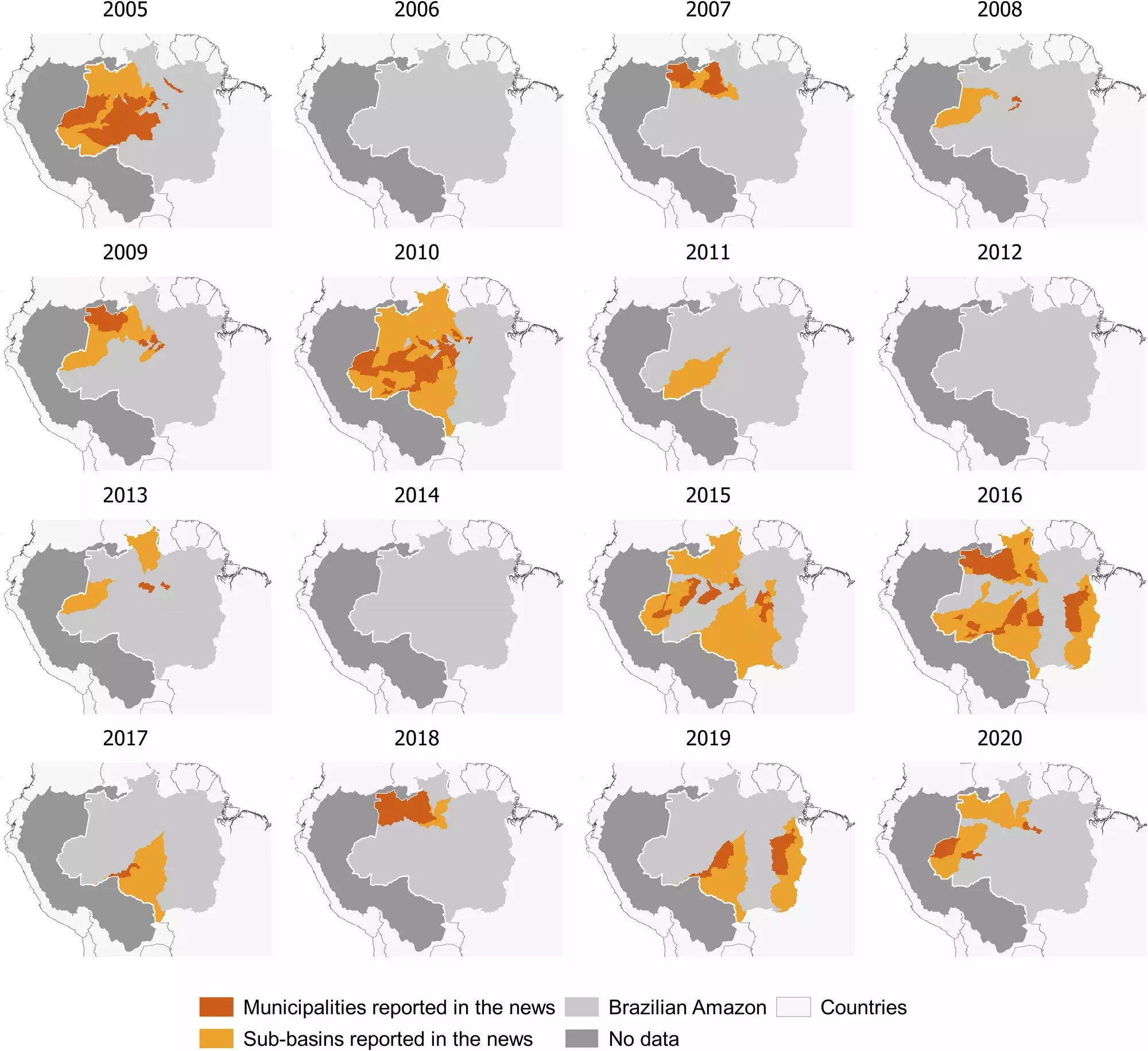In recent years, the Amazon basin has faced unprecedented drought conditions that have reshaped the challenges faced by local populations. A striking study from the Institute of Environmental Science and Technology of the Universitat Autònoma de Barcelona (ICTA-UAB) reveals that these extreme environmental shifts are not merely statistical anomalies; they represent a tipping point for the communities that call this verdant expanse home. Led by Brazilian scientist Letícia Santos de Lima, the research illustrates the alarming increase in both the frequency and intensity of droughts—events that are intrinsically linked to the broader narrative of climate change and the multifaceted impacts it exerts on human livelihoods.
The reality is stark: almost half of non-Indigenous communities, alongside more than 54% of Indigenous villages, are now at risk of isolation as droughts become more severe and prolonged. The most alarming aspect of this finding is how reliant these communities are on riverine and wetland ecosystems for their survival. With low water levels persisting for more than 100 days in recent years—an increase from the historical average of approximately 70 days—the foundations of their existence are being challenged.
Transportation Disrupted: A Lifeline in Jeopardy
Waterways serve as the primary transportation corridors for Amazonian communities, pivotal for accessing essential goods, healthcare, and education. Life during droughts transforms into a labyrinth of scarcity and isolation as navigability declines. Reduced access to fish—the lifeblood of many communities—compounds the issue, critically affecting nutrition and livelihoods. The synthesis of hydrological studies, spatial analyses, and media assessments employed by the researchers powerfully underscores the breadth of this crisis.
Amidst such mounting pressures, one must consider whether the current frameworks in place for addressing these challenges are sufficient. The research identifies a worrying trend: governmental responses remain predominantly reactive rather than proactive. This suggests a profound gap in understanding the urgent need for long-term adaptation strategies that go beyond temporary fixes.
The Illusion of Infrastructure Solutions
One of the more contentious propositions in times of crisis is the idea that building more roads can solve issues of isolation brought on by drought. However, scholars like Santos de Lima argue that this approach often exacerbates the very problem it seeks to relieve. Roads contribute significantly to deforestation, which in turn alters rainfall patterns and increases sedimentation in rivers, further impairing their navigability. This cycle of poor planning reveals a dangerous disconnect between policymakers and environmental realities.
Critics of current intervention strategies point out that a focus on infrastructure can lead to misguided priorities. Immediate logistical challenges must be evaluated in the context of environmental sustainability. Addressing the roots of deforestation and offering robust support for resilience building should take precedence over short-term infrastructure development. The wasteland that many fear the Amazon may become should serve as a clarion call, emphasizing that the fight for this rich biome and its inhabitants goes hand in hand with the advocacy for climate justice.
A Call for Reimagined Strategies
As the Amazon faces this critical juncture, solutions must emerge from an interdisciplinary lens that fuses ecological integrity with social resilience. The study by ICTA-UAB illuminates the need for a comprehensive strategy that prioritizes community-based adaptation alongside environmental protection. This is not merely a local issue; it encapsulates the global reality we all share in an era marked by climate unpredictability.
The involvement of diverse stakeholders—including Indigenous voices, scientists, and policymakers—will be crucial for creating actionable frameworks designed to mitigate these advancements. Solutions must reflect a deep understanding of local dynamics and prioritize the needs, voices, and rights of the original inhabitants of the land.
In essence, the resilient spirit of the Amazonian communities will play a pivotal role in navigating this tumultuous landscape of environmental change. With the right support and innovative, sustainability-driven policies, there lies a potential to empower these communities, enabling them to withstand the impending challenges of climatic shifts head-on.


Leave a Reply